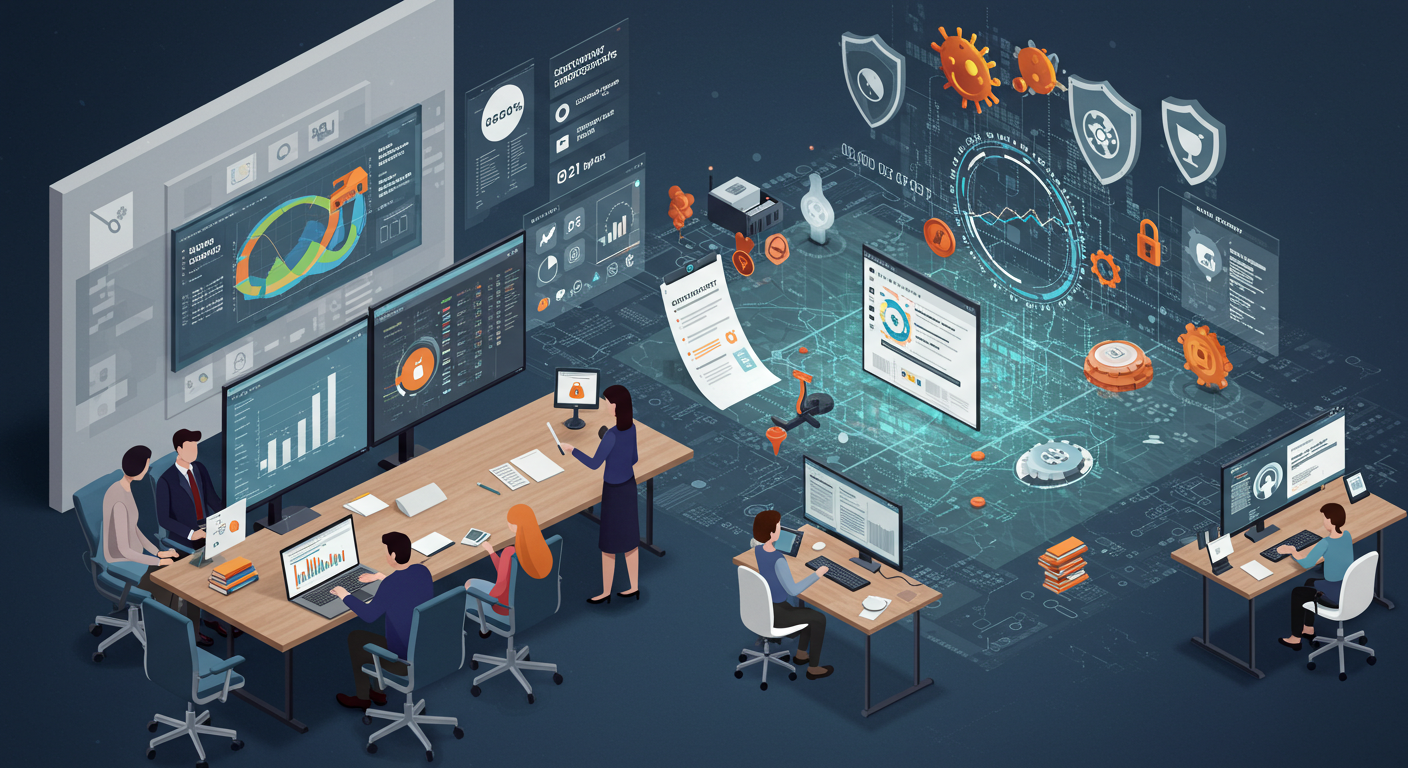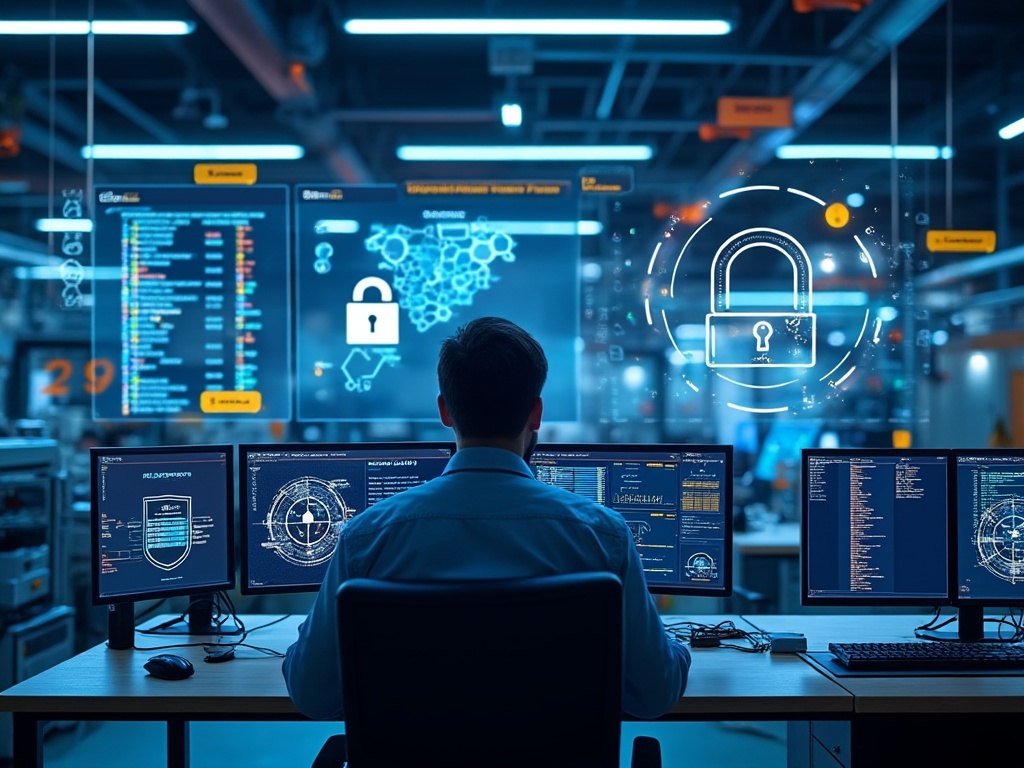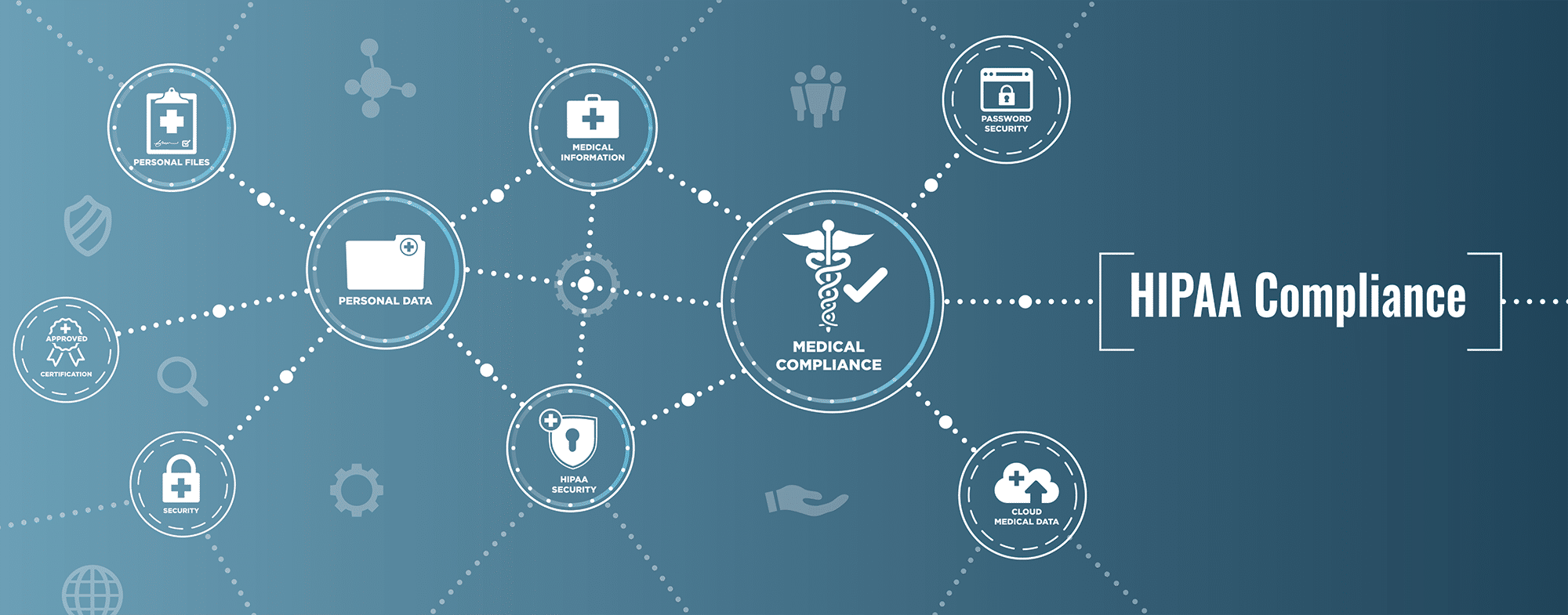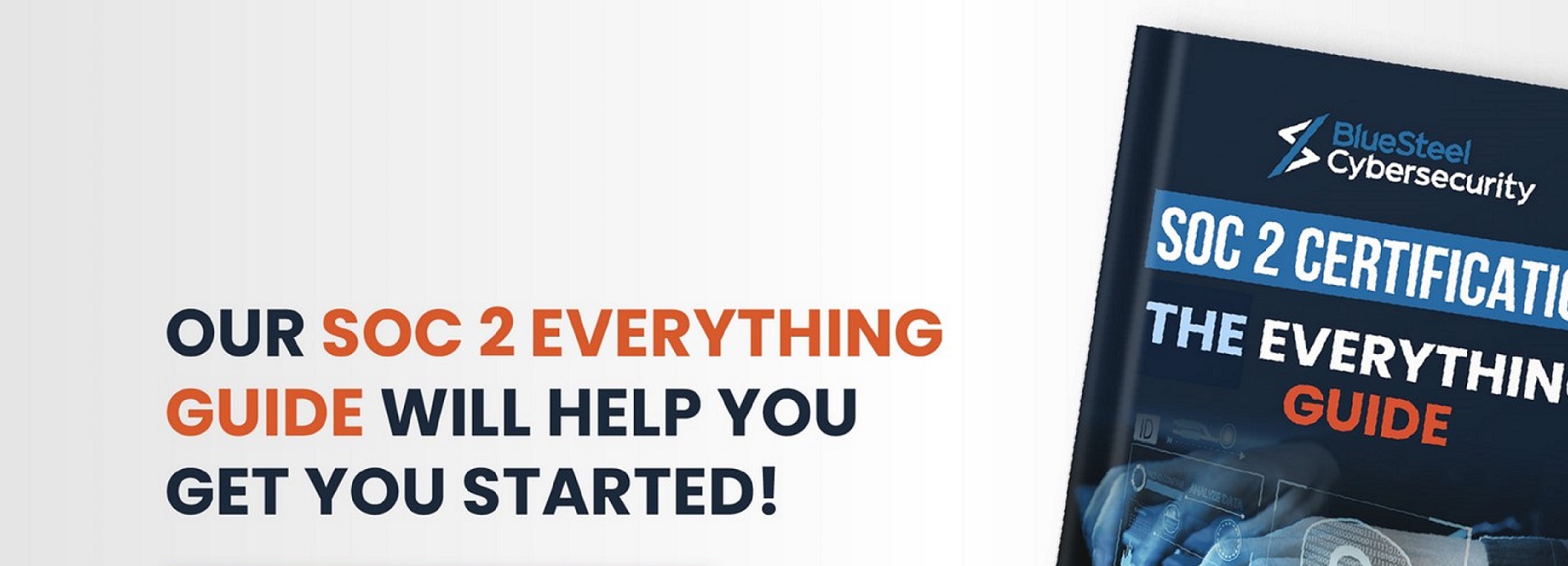The rapid digitization of the education sector has reshaped the learning landscape, offering innovative tools and platforms for students worldwide. From primary schools to higher education institutions like universities, technology’s role is paramount. However, with the rise of digital platforms comes an increase in cyber security threats to universities and schools at all levels. Cybersecurity in education isn’t just an IT concern; it’s a necessity to safeguard academic integrity, protect students’ sensitive data, and ensure that the learning process remains uninterrupted by potential cyberattacks.
Hackers and cybercriminals have recognized the education sector as a lucrative target, primarily due to the vast amounts of data and sometimes lagging security protocols. Reports have shown a growing number of attacks on educational institutions, highlighting the critical need for robust cybersecurity solutions for education. These attacks range from data breaches to ransomware incidents, where essential data is held hostage, disrupting the educational process. Thus, cybersecurity in higher education, as well as in primary and secondary education, must be prioritized.
Why Schools and Universities Are Targets?
Schools and universities are treasure troves of information. From students’ personal details and academic records to research data, these institutions manage a vast array of sensitive data. This richness of data makes higher education establishments especially attractive to hackers. While financial gain is one potential motive, cyberattacks can also aim to disrupt operations, tarnish reputations, or even advance political agendas.
Cybersecurity in higher education is particularly crucial because universities often juggle dual roles: they are places of learning as well as massive research hubs. This dual role means they store not just data about students but potentially groundbreaking research that can be of interest to state actors, competitors, or industry spies.
That said, cyber threats to these institutions are not always about immediate financial gains but can be strategically motivated, making the need for strong cyber security solutions even more pressing. With the increasing integration of technology in the education sector, ensuring the safety and integrity of these establishments from potential threats becomes paramount.
How Do Cyber Threats Affect Schools?
The impact of cyber threats on educational institutions extends beyond mere data theft. For students, a cyberattack could mean exposure of personal information, including details as intimate as passwords and financial records.
For educators, it disrupts their teaching processes, and leaves them at risk to lose years of academic research. Schools, especially higher education institutions, also face reputational damage which can lead to distrust among the public.
The financial implications of ransomware attacks or data breaches can also be staggering. In essence, these threats compromise the very sanctity and smooth functioning of the education sector, emphasizing the need for robust cybersecurity solutions tailored to their unique challenges.
Identifying Potential Cybersecurity Threats
Understanding the landscape of cybersecurity threats to the education sector is pivotal in establishing effective defenses. By categorizing these threats as either external or internal, educational institutions from primary schools to higher education entities can better tailor their response strategies. Recognizing the differences and nuances is the first step in ensuring a comprehensive approach to cybersecurity in education.
External Threats
External threats are those originating from individuals or groups outside the educational institution. Some of the most prevalent include:
- Phishing Attacks: Cybercriminals use deceptive emails or messages to trick individuals, often students or teachers, into revealing sensitive information like passwords or financial details.
- Ransomware Attacks: These involve hackers encrypting an institution’s data and demanding a ransom in exchange for the decryption key. Universities, with their vast troves of academic research and student data, are frequent targets.
- Malware: This software is designed to infiltrate and damage computers without the users’ knowledge. It can be introduced through malicious email attachments, compromised software downloads, or infected external devices.
- Data Breaches: Cyberattackers often target the databases of colleges and universities, seeking to extract large volumes of sensitive information, which can later be sold or misused.
Internal Threats
While external threats often make headlines, internal threats, originating from within the institution, are equally menacing and sometimes more challenging to address.
- Uninformed or Negligent Staff: Educators or staff who aren’t well-versed in cybersecurity best practices can inadvertently expose the institution to risks, such as downloading malicious files or using weak passwords.
- Disgruntled Employees: An unhappy employee with access to the school’s systems might act maliciously, either by stealing information, introducing malware, or intentionally damaging the system.
- Insecure School Devices: Often, devices provided to students and staff lack proper security measures or are not regularly updated, making them vulnerable entry points for cyber threats.
- Mismanagement of Credentials: Failure to regularly update passwords or the misuse of admin privileges can leave doors open for cyber threats to infiltrate.
Addressing both external and internal threats necessitates a multifaceted approach, combining technology solutions, regular training, and a culture of cybersecurity awareness within the educational ecosystem.
Implementing Standards and Procedures to Address Cybersecurity Threats
In the continuously evolving landscape of cyber threats, the education sector needs proactive measures to safeguard its sensitive information and technological infrastructure. Implementing standards and procedures becomes the bedrock of an institution’s cyber defense strategy, ensuring that every stakeholder, from students and teachers to administrators, understands their role in the cybersecurity framework.
Establishing Guidelines
Crafting and adhering to robust guidelines, which span across multiple aspects, from determining who has the privilege to access certain data to ensuring systems remain updated is pivotal to ensure the cybersecurity of educational institutions. .
When establishing cybersecurity guidelines, priority should be given to items such as access control, password protocols, software updates, internet usage on school devices, and the importance of having fortified backup procedures:
- Access Control: Define who has access to which parts of the institution’s data. For example, administrative staff might need access to student records, but this information should be off-limits to general staff or students.
- Password Protocols: Set and enforce strong password policies, advocating for complex combinations and regular changes. Introducing multi-factor authentication can further bolster security.
- Regular Updates: Ensure all software, especially security software, is kept up-to-date. This minimizes vulnerabilities that hackers could exploit.
- Internet Usage Policies: Clearly define what websites or platforms are deemed safe for use on school devices. This reduces the risk of malware infections from malicious sites.
- Backup Procedures: Ensure data is regularly backed up and that backup systems themselves are secure. This can mitigate damages in case of ransomware attacks or data breaches.
Communication
The marriage of education and cybersecurity is predicated on the bedrock of consistent and lucid communication. Whether it’s training staff and students about the latest cyber threats or fostering a culture where potential vulnerabilities can be openly discussed, clear channels of communication can spell the difference between a secured institution and a vulnerable one.
As such, it’s important to discuss the significance of regular training, setting up specific channels for reporting threats, the role of feedback in cybersecurity, and the pivotal nature of awareness campaigns:
- Regular Training: Conduct training sessions at the start of every academic term, updating staff and students about the latest threats and safety protocols.
- Channels for Reporting: Establish clear channels through which potential threats or breaches can be reported. Encouraging a proactive response can help contain potential issues swiftly.
- Feedback Loop: Allow students, teachers, and staff to provide feedback on the institution’s cybersecurity measures. They can offer a fresh perspective on vulnerabilities that might be overlooked by IT professionals.
- Awareness Campaigns: Beyond formal training, run regular campaigns or workshops highlighting the importance of cybersecurity, offering tips, and showcasing real-world examples of breaches to highlight the consequences of negligence.
Effective implementation of cybersecurity measures requires a blend of strict guidelines and open communication. While rules define the boundaries, communication ensures everyone is aware, vigilant, and proactive in their approach to cyber safety.
Adopting Best Practices for Cybersecurity
To fortify educational institutions against cyber threats, it is essential to not only recognize potential vulnerabilities but also adopt proven practices that have been successful across the sector. By understanding the importance of cybersecurity and integrating these best practices, schools, colleges, and universities can better protect themselves and their stakeholders from potential breaches.
Training
As cyber threats continue to evolve, so must our strategies to counteract them. At the forefront of these defenses is training, which serves as a bedrock against many of these challenges. This involves not just one-time sessions but continual learning, simulations, and a focus on sound password practices.
Let’s take a closer look at the importance of continuous education, practical phishing simulations, the need for robust password management, and the intertwining of personal and institutional cybersecurity:
- Continual Learning: Cybersecurity isn’t a one-time lesson. It evolves with time as hackers find new ways to breach defenses. Institutions should have regular refresher courses to update teachers, students, and staff on the latest threats.
- Phishing Simulations: To prepare students and staff for real-world phishing attempts, simulate attacks and teach them how to recognize and respond.
- Password Management: Provide training on the importance of strong, unique passwords for every account and the benefits of password managers.
- Cybersecurity at Home: Encourage educators and students to implement cybersecurity measures at home, as breaches in their personal systems can pose indirect threats to the institution.
Network Security
The very network that facilitates the flow of information in a school could also be its Achilles’ heel if not adequately safeguarded. A combination of firewalls, VPNs, stringent Wi-Fi security, and proactive monitoring forms the bastion against potential cyber intrusions.
Let’s briefly look at firewalls, the role of VPNs in a school’s cybersecurity arsenal, the intricacies of Wi-Fi security, and the importance of ceaseless network monitoring:
- Firewalls: Ensure that advanced firewalls are in place to screen incoming and outgoing traffic, blocking malicious or unauthorized data.
- VPN: Use Virtual Private Networks (VPNs) for any off-campus access to the institution’s systems to ensure encrypted and secure connections.
- Wi-Fi Security: Secure Wi-Fi networks with strong passwords, and consider creating separate networks for administrative tasks, students, and guests.
- Network Monitoring: Implement tools that can constantly monitor the network for any unusual or unauthorized activities.
Data Security
Data is the lifeblood of any educational institution, and its security is paramount. Encrypting this data, ensuring its backed-up regularly, restricting access, and having a clear-cut response to potential breaches are just some of the steps to ensure its safety.
Here we delve deeper into the facets of data encryption, the imperatives of regular backups, defining user access levels, and the need for a pre-established data breach response:
- Encryption: Always encrypt sensitive data, whether it’s in transit or at rest.
- Regular Backups: Schedule consistent backups to off-site locations or cloud services and periodically test these backups for integrity.
- Access Levels: Implement strict user role definitions, ensuring that individuals only have access to data necessary for their roles.
- Data Breach Response: Have a clear plan in place detailing the steps to follow in case of a breach, ensuring timely and appropriate responses.
Software Security
Every piece of software, though a tool, could be a potential gateway for cyber threats. Ensuring these tools are regularly updated, fortified against malware, and used responsibly forms the backbone of software security in schools.
It’s worth taking a moment to discuss a few considerations, such as regular software updates, the frontline defense role of antivirus tools, the importance of using only whitelisted software, and the protective utility of sandboxing techniques:
- Regular Updates: Always keep all software, including operating systems, up to date. Developers regularly release patches for known vulnerabilities.
- Antivirus and Antimalware: Ensure all systems have updated antivirus and antimalware tools in place, offering real-time protection.
- Whitelisting: Allow only approved software to run on school devices, ensuring students and staff can’t inadvertently introduce vulnerabilities.
- Sandboxing: For academic research or unfamiliar software, run them in isolated environments (sandboxes) to prevent any potential threats from affecting the main system.
Adopting these best practices in cybersecurity helps ensure that educational institutions remain robust in their defenses, providing a safe learning environment for all stakeholders.
Technology for Cybersecurity Protection
In the constantly evolving world of cyber threats, technology plays a pivotal role in safeguarding educational institutions. Leveraging cutting-edge solutions tailored to the unique needs of schools and colleges can dramatically enhance the cybersecurity posture of the education sector. Here we will discuss some fundamental technologies that have become indispensable for protecting against cyber threats.
Firewalls
In the digital realm of education, firewalls serve as the virtual walls, guarding against unwelcome intrusions while facilitating legitimate communications. Their role is to distinguish between trusted and untrusted networks, acting as gatekeepers.
In this section, we will explain the primary purpose of a firewall, the different types available, and the unique advantages they offer to educational institutions:
- Purpose: Firewalls monitor and filter incoming and outgoing network traffic based on an organization’s previously determined security policies. They are crucial in blocking unauthorized access while permitting outward communication.
- Types: There are hardware firewalls that are standalone devices, and software firewalls that run on general-purpose operating systems. Depending on the institution’s needs, one or a combination of both can be implemented.
- Benefits for Schools: By setting up appropriate firewall configurations, educational institutions can ensure that students access only appropriate web content, and potential cyberattackers are kept at bay.
Encryption
As cyber threats become increasingly sophisticated, the protection of sensitive data, whether it’s academic research, student personal information, or administrative data, has never been more paramount. Encryption, in this context, stands as the coded language that ensures data remains in the right hands. It’s a two-pronged approach, shielding data at rest and in transit.
The following factors can help you better understand the nuances of encrypting data, both when it’s stored and when it’s moving, and why it’s indispensable for schools:
- Data At Rest: Files stored on computers, servers, or databases should be encrypted to ensure they can’t be accessed if the hardware is compromised.
- Data In Transit: Data being transferred, such as during online learning sessions or email exchanges, should also be encrypted to prevent interception.
- Benefits for Schools: With the rise in data breaches, encryption is crucial in protecting sensitive information related to students, staff, and academic research.
Anti-virus
The digital age has brought forth many conveniences, but not without its share of digital maladies in the form of viruses, malware, and other harmful software. Antivirus programs act as the health professionals of this cyber ecosystem, diagnosing potential threats and neutralizing them before they can wreak havoc.
Let’s take a moment to consider the significance of regular scans, the imperative of keeping the software updated, and why educational institutions can’t afford to neglect this:
- Regular Scanning: Anti-virus tools should be set to scan regularly, ensuring real-time protection against malware.
- Updates: New malware emerges daily, so it’s crucial that antivirus definitions are updated frequently.
- Benefits for Schools: Given the multitude of devices and user behaviors within educational institutions, anti-virus software helps in preventing malware from disrupting academic processes or compromising sensitive information.
Multi-factor Authentication (MFA)
In a world where passwords can be guessed, hacked, or stolen, relying solely on them for security can be perilous. Multi-factor Authentication, or MFA, adds layers to this security process, ensuring that users prove their identity not just by what they know, but also by what they possess or inherently are. This multi-layered verification process is akin to having multiple doors to breach, making it an invaluable asset in the world of educational cybersecurity.
Here is a brief overview of the different types of verification factors, practical implementation methods, and why schools should see MFA not as an option, but a necessity:
- Types of Factors: Something you know (password), something you have (a smart card or mobile device), and something you are (biometric verification).
- Implementation: Many services now offer MFA, and educational institutions should leverage this for accessing email accounts, institutional portals, and other sensitive platforms.
- Benefits for Schools: MFA significantly reduces the risk of unauthorized access. Even if cybercriminals obtain a password, they’d need the second factor, making it exponentially harder to breach an account.
Incorporating these technologies forms the foundation of robust cybersecurity for educational institutions and effective utilization can ensure that the educational environment remains conducive to learning without the constant looming threat of cyber attacks.
Benefits of Cybersecurity for Schools
As digital transformation continues to permeate the education sector, the importance of cybersecurity goes beyond the obvious need to protect sensitive information, and robust cybersecurity practices offer an array of benefits that enhance the overall educational experience. Let’s explore some of the top advantages that schools, colleges, and universities stand to gain.
Increased Productivity
In the digital age, productivity in educational institutions hinges significantly on uninterrupted digital workflows and reliable online tools. Cyberattacks can not only hamper this but can also derail academic schedules and processes.
By fortifying cybersecurity, schools can ensure that the pace and quality of education remain consistent. Here’s how cybersecurity directly translates to enhanced productivity:
- Minimized Downtime: Cyberattacks can disrupt the normal functioning of networks, databases, and online platforms. Schools can reduce the likelihood of such disruptions and maintain consistent educational delivery with strong cybersecurity measures.
- Streamlined Operations: Efficient security tools and policies can simplify IT management, freeing up resources and time, while also allowing educators and administrators to focus more on academic and operational excellence, rather than constantly firefighting potential threats.
- Confidence in Digital Tools: Teachers, students, and parents can utilize online resources, platforms, and tools with greater confidence, knowing that they’re protected from potential cyber threats, overall promoting a more seamless and effective learning experience.
Increased Data Security
Data is an invaluable asset for schools, encapsulating everything from student records to proprietary academic research, and as guardians of this information, educational institutions have a responsibility to protect it from prying eyes and malicious intents.
The advantages of robust cybersecurity measures go beyond mere data protection. Here we explore how these measures bolster data security, privacy, and ensure regulatory compliance:
- Protection of Sensitive Information: Schools hold a plethora of sensitive information, from student grades and addresses to academic research. Implementing sound cybersecurity measures ensures this data remains confidential and protected from unauthorized access.
- Enhanced Privacy: With the increasing concerns about data privacy, especially for minors, schools with robust cybersecurity can reassure students, parents, and staff that their personal information won’t be misused or inadvertently exposed.
- Compliance with Regulations: Many regions have stringent regulations about data protection in educational settings. Strong cybersecurity measures ensure that institutions remain compliant and avoid potential legal repercussions.
Reduced Costs
While there’s an undeniable cost associated with setting up cybersecurity infrastructure and practices, the financial repercussions of neglecting this can be even greater. From potential ransom payments to costs incurred during recovery after a breach, the financial landscape post cyberattack can be grim.
Here’s how a solid cybersecurity framework can be viewed not as an expense but as a long-term investment, saving funds and reputation:
- Avoidance of Ransom Payments: Ransomware attacks, where hackers demand payment to restore data or systems, can be financially draining. Good cybersecurity practices can prevent such attacks or aid in quicker recovery without capitulating to ransom demands.
- Reduction in Recovery Costs: A significant cyber breach can lead to substantial costs in terms of system restoration, data recovery, and potential legal fees. Investing in cybersecurity can dramatically reduce the risk of such incidents.
- Protecting Reputation: Data breaches or cyber incidents can tarnish the reputation of educational institutions, leading to a potential decline in admissions or funding. A strong cybersecurity posture can safeguard against this, ensuring that the institution’s reputation remains intact.
While the initial investment in cybersecurity might seem substantial for some institutions, the long-term benefits far outweigh the costs. A proactive approach to cybersecurity not only ensures data protection but also fosters an environment where both educators and learners can thrive.
Challenges Faced by Schools
Despite the obvious need for robust cybersecurity measures in the education sector, many schools, colleges, and universities face a myriad of challenges when attempting to bolster their digital defenses. Let’s delve into some of the primary obstacles that hinder the adoption of effective cybersecurity practices within educational institutions.
Lack of Awareness
Awareness forms the bedrock of any robust cybersecurity strategy. Without an understanding of the magnitude and nature of threats, schools can easily leave themselves vulnerable. It isn’t just about knowing the threats; it’s about equipping everyone in the institution with the knowledge to counteract them. Here’s how a gap in awareness can pose significant challenges:
- Underestimating Threats: Some educational institutions might not fully understand the extent of cyber threats they face, leading to inadequate preparations. This mindset often stems from a false belief that schools aren’t lucrative targets for cybercriminals.
- Inadequate Cybersecurity Education: Often, educators, administrators, and staff are not equipped with basic knowledge about cyber threats, making them more susceptible to attacks like phishing or social engineering.
- Misunderstanding of Responsibilities: There may be misconceptions about who is responsible for cybersecurity. For instance, a school might assume that their IT department handles all aspects of security, while the IT department believes the onus is on individual users to safeguard their data.
Lack of Resources
While the digital age offers unparalleled opportunities for enhancing education, it also requires constant investment to stay secure. Many schools grapple with constraints, be it financial, technological, or human resources. A lack of adequate resources can hinder the implementation of effective cybersecurity measures, here’s how:
- Budgetary Constraints: Many schools operate on tight budgets, with limited funds allocated to cybersecurity. This can make it challenging to invest in advanced security solutions or hire expert personnel.
- Outdated Infrastructure: Older technological infrastructures might not support the latest cybersecurity tools or updates, leaving gaps in defense mechanisms.
- Insufficient Training: Even if tools are available, without adequate training for teachers, students, and staff, they can remain underutilized or improperly implemented.
Resistance to Change
Tradition and established procedures are hallmarks of many educational institutions. While they bring a sense of stability, they can sometimes act as barriers when there’s a need for change, especially in the rapidly evolving realm of cybersecurity. The inertia or unwillingness to adapt can lead to vulnerabilities, as outlined in the following points:
- Reluctance to Adopt New Technologies: Some institutions, especially older ones, might resist incorporating newer technologies or security practices out of a desire to maintain tradition or due to apprehensions about the learning curve.
- Organizational Inertia: Larger institutions with established bureaucracies might find it difficult to implement rapid changes or adopt new cybersecurity strategies.
- Cultural Barriers: In some cases, there’s a prevailing culture that resists technological advancements or views cybersecurity measures as impediments to academic freedom or creativity.
Conclusion
The integration of digital tools in the education sector offers tremendous benefits, but it also paves the way for sophisticated cybersecurity challenges. Cyber threats are no longer just a concern for businesses but have emerged as pressing issues for schools, colleges, and universities. These institutions, rich with sensitive data and often perceived as softer targets, find themselves particularly vulnerable to an array of cyber-attacks.
It’s vital that educational institutions understand the multi-dimensional nature of these threats. While the allure of technology in enhancing learning experiences is undeniable, the accompanying risks cannot be ignored. Balancing this duality requires a proactive approach to cybersecurity, grounded not just in robust software solutions, but also in fostering a culture of awareness and vigilance.By addressing challenges such as limited resources, resistance to change, and a general lack of awareness, schools can build a resilient digital infrastructure. Investing in cybersecurity for educational institutions is more than just a defense strategy—it’s a commitment to ensuring that the digital avenues of learning remain open, accessible, and above all, secure for everyone.
Frequently Asked Questions (FAQs) about Cybersecurity in Education
Cybersecurity in education is crucial for safeguarding sensitive data such as student records, academic research, and financial information. It helps protect against cyber threats like data breaches, ransomware attacks, and phishing attempts, ensuring the integrity and continuity of the learning process.
Schools and universities face various cyber threats, including phishing attacks, ransomware incidents, malware infections, and data breaches. These threats can compromise sensitive information, disrupt operations, and damage the institution’s reputation.
Cyber threats can lead to exposure of personal information, disruption of teaching processes, loss of academic research, reputational damage, financial implications, and regulatory non-compliance. These consequences can significantly impact the institution’s stakeholders and operations.
Cybersecurity threats faced by educational institutions can be categorized into external threats, such as phishing attacks and ransomware incidents, and internal threats, including uninformed or negligent staff, disgruntled employees, insecure school devices, and mismanagement of credentials.
Educational institutions can address cybersecurity threats by implementing standards and procedures, establishing guidelines for access control, password protocols, software updates, internet usage, and backup procedures. They should also prioritize communication, regular training, and awareness campaigns among staff and students.
Implementing robust cybersecurity measures can increase productivity by minimizing downtime and streamlining operations, enhance data security and privacy, reduce costs by avoiding ransom payments and recovery expenses, and protect the institution’s reputation.
Some challenges faced by schools in implementing cybersecurity measures include a lack of awareness about cyber threats, limited resources due to budgetary constraints, outdated infrastructure, insufficient training, resistance to change, and cultural barriers.
Educational institutions can overcome challenges by raising awareness about cyber threats, allocating adequate resources for cybersecurity, upgrading infrastructure, providing comprehensive training, fostering a culture of cybersecurity awareness, and embracing technological advancements.
Educational institutions can use technologies such as firewalls, encryption, antivirus software, multi-factor authentication (MFA), and network monitoring tools to enhance cybersecurity protection and safeguard sensitive information from cyber threats.
Educational institutions can balance the benefits of technology with cybersecurity risks by adopting a proactive approach to cybersecurity, implementing robust security measures, educating stakeholders about cyber threats, and continuously monitoring and updating security protocols to mitigate risks effectively.






